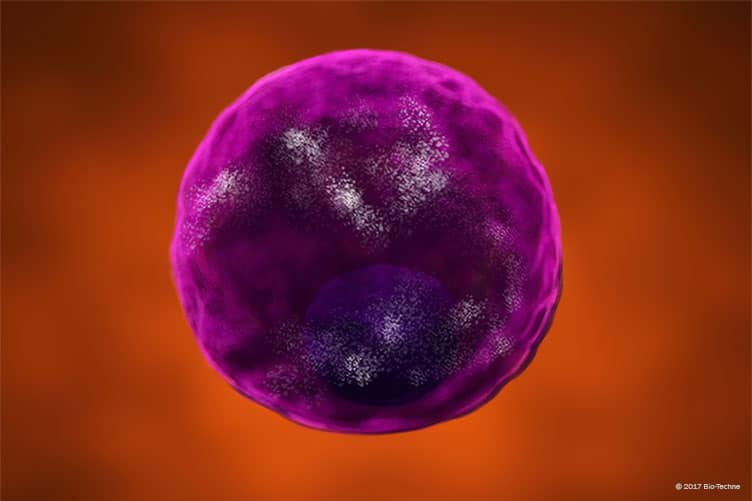LTi Cell Markers
Click on one of the ILC subsets shown in the buttons below to see the markers that are commonly used to identify each cell type.

CD1a-
CD3-
CD11c-
CD14-
CD19-
CD34-
CD94-
DLEC/CLEC4C/BDCA-2-
Fc gamma RIII/CD16-
Fc epsilon RI-
IL-3 R alpha/CD123-
TCR alpha/beta-
TCR gamma/delta-
MOUSE
CD3-
B220/CD45 R-
CD5-
CD11b-
Gr-1/Ly6G-
Ter-119-
A note regarding Lin- Markers
alpha/beta
alpha/beta
Overview
Fetal lymphoid tissue inducer (LTi) cells are required for the development of lymph nodes and Peyer’s patches during embryogenesis. These cells, along with postnatal LTi-like cells, have been classified as natural cytotoxicity receptor negative (NCR-) group 3 ILCs (ILC3s). (NCR-) ILC3s are one of two subsets of ILC3s that have been characterized, with the other being (NCR+) ILC3s. Similar to the other ILC3s, LTi cells require the transcription factor ROR gamma t for their development and function. In addition, these cells secrete IL-22 and IL-17, along with lymphotoxin alpha/beta. In mice, LTi cells are commonly identified as Lin-CD45+D117/c-kit+CD127/IL-7 R alpha+ Integrin alpha4 beta7+ ROR gamma t+ cells that can be either CD4+ or CD4-. Additionally, they also express CCR6 and lack expression of NKp46. Human LTi cells have a similar phenotype, but they also express CD7 and CD161 and do not express CD4 or NKp44. Postnatal LTi-like cells are similar to fetal LTi cells, except they develop presumably from progenitors in the bone marrow rather than the fetal liver, and they are unable to generate secondary lymphoid organs. These cells are phenotypically similar to fetal LTi cells, but they have also been found to express OX40 Ligand and CD30 Ligand.
